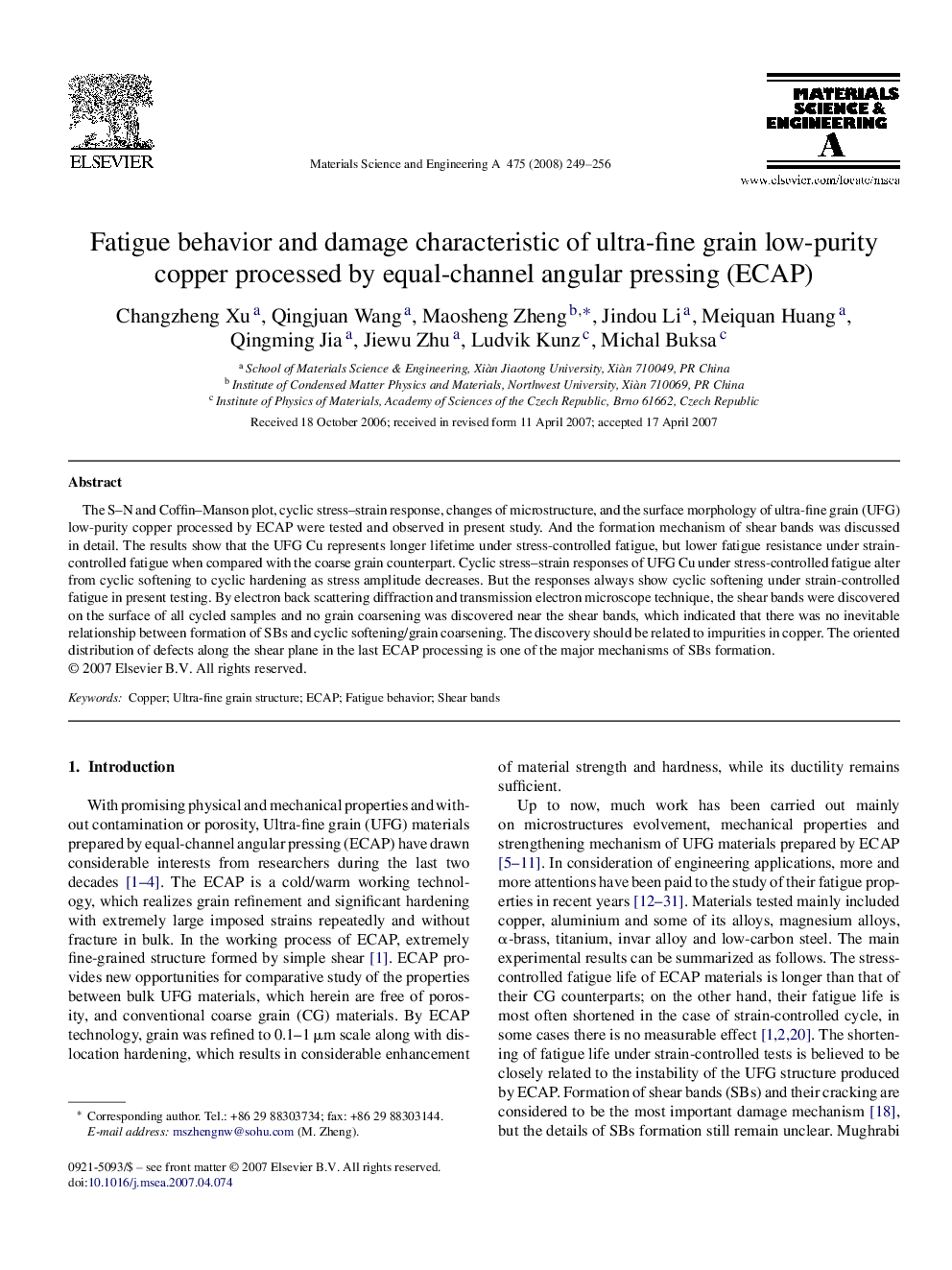| Article ID | Journal | Published Year | Pages | File Type |
|---|---|---|---|---|
| 1583081 | Materials Science and Engineering: A | 2008 | 8 Pages |
The S–N and Coffin–Manson plot, cyclic stress–strain response, changes of microstructure, and the surface morphology of ultra-fine grain (UFG) low-purity copper processed by ECAP were tested and observed in present study. And the formation mechanism of shear bands was discussed in detail. The results show that the UFG Cu represents longer lifetime under stress-controlled fatigue, but lower fatigue resistance under strain-controlled fatigue when compared with the coarse grain counterpart. Cyclic stress–strain responses of UFG Cu under stress-controlled fatigue alter from cyclic softening to cyclic hardening as stress amplitude decreases. But the responses always show cyclic softening under strain-controlled fatigue in present testing. By electron back scattering diffraction and transmission electron microscope technique, the shear bands were discovered on the surface of all cycled samples and no grain coarsening was discovered near the shear bands, which indicated that there was no inevitable relationship between formation of SBs and cyclic softening/grain coarsening. The discovery should be related to impurities in copper. The oriented distribution of defects along the shear plane in the last ECAP processing is one of the major mechanisms of SBs formation.
